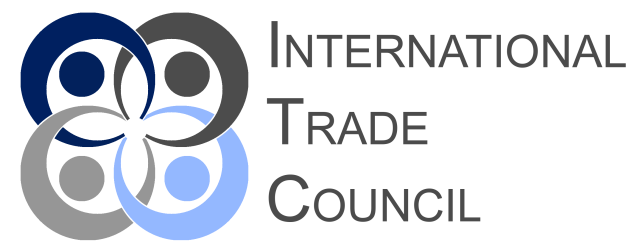Protecting intellectual property in Armenia is essential for businesses and individuals to maintain their competitive edge and safeguard their valuable assets. The country has made significant progress in improving its IP legal framework, but it is crucial to remain vigilant and proactive in the face of ongoing risks. This includes staying up to date on relevant laws and regulations, monitoring potential infringements, and utilizing available enforcement mechanisms when necessary. Additionally, addressing challenges and seizing opportunities for enhancing IP protection will contribute to fostering a culture of innovation and creativity in Armenia. By taking these steps, businesses and individuals can better protect their IP assets and contribute to the country's economic growth and development.
Types of Intellectual Property Protection in Armenia
- Patents: Patents in Armenia protect inventions that meet the requirements of novelty, inventive step, and industrial applicability. Patent protection lasts for 20 years from the filing date, provided that annual maintenance fees are paid.
- Trademarks: Trademarks in Armenia are protected through registration with the Intellectual Property Agency (IPA). A trademark registration is valid for ten years from the application date and can be renewed indefinitely for additional ten-year periods.
- Industrial Designs: Industrial designs that are new and possess individual character are eligible for protection in Armenia. A design registration lasts for an initial five-year term and can be renewed for up to two additional five-year terms, totaling 15 years of protection.
- Copyrights: Armenia offers copyright protection for original works of authorship, including literary, artistic, and scientific works. The duration of copyright protection varies depending on the type of work but generally lasts for the life of the author plus 70 years after their death.
- Trade Secrets: Trade secrets are protected under the Armenian Law on Trade Secrets, which safeguards confidential business information, including formulas, processes, and methods. There is no specific duration for trade secret protection, but the information must be kept confidential to maintain its protected status.
Risks to Intellectual Property in Armenia
Despite the progress in the Armenian IP legal framework, several risks still exist. Some of the most common risks include:
- Counterfeiting and piracy: Armenia faces challenges in combating the production and distribution of counterfeit goods and pirated materials, both domestically and across its borders. This affects various industries, including pharmaceuticals, clothing, and software.
- Inadequate enforcement: While Armenia has made strides to improve its IP enforcement capabilities, there are still instances of insufficient enforcement efforts, leading to prolonged disputes and difficulties in obtaining effective remedies.
- Limited public awareness: There is a lack of public awareness about the importance of IP protection, which may contribute to a casual attitude towards IP infringement.
Enforcing Intellectual Property Rights in Armenia
- Administrative enforcement: The Intellectual Property Agency (IPA) and the State Revenue Committee play essential roles in the administrative enforcement of IP rights. Rights holders can request IPA or the State Revenue Committee to take action against IP infringements, such as seizing counterfeit goods or suspending the release of suspected infringing products.
- Civil enforcement: Rights holders can initiate civil lawsuits to seek remedies such as injunctions, damages, and the destruction of infringing goods. While civil enforcement may offer effective remedies, the process can be time-consuming and costly.
- Criminal enforcement: Criminal prosecution is also available for specific IP violations, such as copyright infringement and trademark counterfeiting. The Armenian police and the prosecutor's office are responsible for investigating and prosecuting criminal IP cases.
Relevant Statistics
- According to the World Intellectual Property Organization (WIPO), Armenia filed 52 patent applications in 2020, indicating a growing interest in protecting intellectual property in the country.
- In 2020, the Intellectual Property Agency (IPA) received 1,534 trademark applications, demonstrating the importance of brand protection for businesses operating in Armenia.
- A 2019 study conducted by the European Union Intellectual Property Office (EUIPO) estimated the value of counterfeit and pirated goods in the Armenian market at approximately €30 million, illustrating the scale of the counterfeiting and piracy issues in the country.
- The U.S. Department of Commerce's International Trade Administration noted in a 2021 report that Armenia has made significant progress in aligning its IP laws with international standards, but enforcement of IP rights remains a challenge due to limited resources and insufficient training for law enforcement and judiciary officials.
Challenges and Opportunities for Intellectual Property Protection in Armenia
- Streamlining IP registration processes: To encourage more businesses and individuals to protect their IP assets, there is a need to streamline and simplify IP registration processes in Armenia. This includes enhancing online platforms for IP registration and providing clear guidance on the application requirements.
- Capacity building for IP enforcement agencies: Strengthening the capacity of law enforcement, customs officials, and the judiciary to effectively enforce IP rights is essential in Armenia. This can be achieved through targeted training programs, sharing of best practices, and international cooperation.
- Raising public awareness: Increasing public awareness of the importance of IP protection is crucial for fostering a culture of respect for IP rights in Armenia. This can be achieved through educational campaigns, public outreach, and collaboration with industry stakeholders.
- Encouraging innovation and creativity: Developing a strong IP environment in Armenia requires promoting innovation and creativity. This can be achieved by providing incentives for research and development, supporting start-ups and entrepreneurs, and facilitating collaboration between academia and industry.
Related Information














